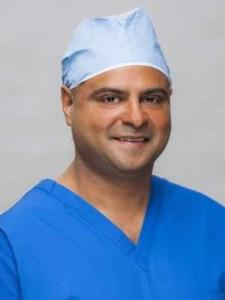Each year, more than a million men and women undergo hip and knee replacement surgeries to help relieve pain, provide greater stability and improve strength and range of motion in joints damaged by arthritis or other disease or trauma.
While a large majority of procedures are straightforward and achieve excellent outcomes, in a few instances, complications can develop that require a second surgery to correct. This is called revision surgery, and it requires careful pre-surgical planning and preparation. This is to ensure the complications are resolved and the outcome is optimized for the patient’s needs.
When is revision necessary?
Revision surgery performs when the artificial joint fails in some way, causing pain, mobility issues or other problems that require surgical intervention to correct. Depending upon the type of failure that occurs, either the entire joint or just a portion of it will need to replace.
Before revision surgery occurs, the doctor evaluates the joint carefully to ensure the best possible approach for resolution of the issues you’re experiencing. Some of the most common reasons for joint revision surgery include infection, loosening or displacement of the artificial joint components, wear and tear on components over time, joint instability or stiffness, persistent pain in the joint, or fractures of the bone surrounding the joint components, usually as the result of a fall.
What happens during a revision procedure?
That depends in part on the cause of the revision. Generally, surgery involves removing the damaged portions of the failed artificial joint and preparing the bones using special techniques. This can help strengthen them and reinforce them before inserting new components into the joint space.
In hip revision surgery, the plastic liner in the hip socket, or acetabulum, is carefully removed and a wire mesh material is used to line and reinforce the bone before inserting a new component and securing it with cement or special surgical screws.
The thigh bone, or femur, is carefully incised to remove the stem portion of the implant that extends into the bone. A new stem portion inserts into the bone, usually using surgical wire to reinforce the femur. Knee replacement also involves special techniques to remove the failed components and replace them with new components. Surgeon adds reinforcement when necessary to ensure the joint is stable and secure.
What is recovery like?
As a revision patient, you understand the recovery and rehabilitation processes necessary for an optimal outcome. Before surgery takes place, you’ll receive complete information about the rehabilitation program you’ll need to undergo. This is order to adjust to your new joint and learn important techniques to ensure the joint remains optimally functional.
Adhering to your program of rehabilitation is essential to your recovery, and having regular follow-up appointments to assess your progress is also very important. Rehabilitation following a revision surgery often begins immediately after the surgery and continues for about three months in most patients.
Why choose Dr. Karkare?

Dr. Karkare is one of New York City’s leading experts in revision procedures. He has extensive experience and high rates of success following revision surgery. Dr. Karkare uses the most advanced techniques and technology. This is to enable every patient to get the customized care necessary for the best possible outcome. To learn more and to schedule an evaluation, use our online contact form or call right now at (516) 735-4032.





